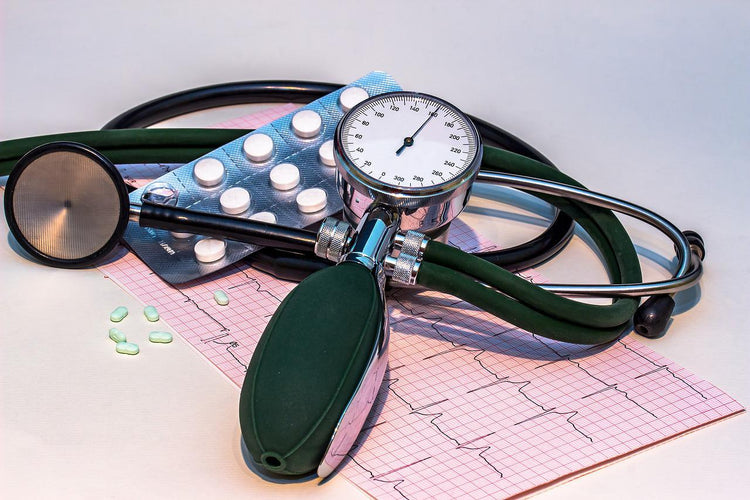What Is the Life Expectancy with Angina?


Related products
Angina – An Introduction
Angina is commonly described as chest pain and discomfort. The word angere is Latin in origin and means to choke or strangle. However, the feeling is frequently characterized as unease rather than agony. Some describe a burning or tightening sensation in the middle of the chest as something like stress or heaviness. The soreness is often felt in specific individuals' left arm, shoulder, neck, or jaw.
In some instances, stable angina is induced by emotional stress and exertion, such as ascending stairs or walking at a brisk pace. It typically diminishes within less than five minutes when one takes a break.
In contrast, unstable angina arises unexpectedly, manifesting with minimal effort or even during periods of rest or sleep. Angina is unstable and may be an indication of a heart attack if it gets worse, occurs more frequently, or lasts longer than usual. one must dial the emergency contact number if the symptoms persist for more than 10 minutes after administering the medication.
What are the Symptoms of Angina?
The symptoms of stable angina are typically expected. This indicates that a similar level of exercise or activity might trigger the occurrence of angina. When one reduces the intensity or stops the exercise, the angina is supposed to get better or disappear.
- The typical symptom is an achy chest that feels somewhat to the left or behind the breastbone. The discomfort associated with stable angina typically starts gradually, intensifying over several minutes before eventually subsiding.
- The sensation of chest pain is usually described as constriction, intense pressure, grasping, or pressing.
- It could spread to the arm (usually the left), back, jaw, neck, and shoulder.
Symptoms that are not as frequently recognized in cases of angina may encompass feelings of fatigue.
- Breathing difficulties
- Fragility
- Feeling unsteady or faint
- Perspiration, nausea, and vomiting
- Heart palpitations
What are the Causes of Angina?
From a biological perspective, angina might result from numerous factors.
1. Coronary Artery Syndrome
When the heart's arteries narrow due to the accumulation of a material called plaque on their walls.
2. Coronary microvascular disorder
When the tiny arteries of the heart get damaged, causing a reduction in the amount of blood that flows through them.
3. Muscle spasms
The arteries surrounding the heart could narrow due to an abrupt spasm, restricting the blood supply.
4. Clots in the blood
Symptoms of angina are typically brought about by the formation of a blood clot in the arteries surrounding the heart in patients who are experiencing unstable angina or myocardial infarction. These clots can partially or obstruct the flow of blood through them.
What are the Various Types of Anginas?
Several distinct varieties of angina exist. Every type possesses its unique defining traits.
Stable Angina
Stable angina is characterized by chest pain or discomfort that occurs with exertion or stress and typically resolves with rest or medication. This type exhibits a regular pattern, frequently arising following physical effort or tension. The symptoms usually do not persist for an extended period and might be alleviated through medication or by taking time to rest.
Unstable Angina
Unstable angina does not adhere to a specific pattern and will also present with greater severity. It may happen while relaxing, persist for longer, and not respond to medicines. It is regarded as a medical emergency since it could turn into a heart attack.
Microvascular Angina
Microvascular angina is a condition characterized by chest pain due to issues in tiny blood vessels of the heart. Microvascular angina impacts the small arteries within the heart. It could occur during routine daily activities, persist for an extended period, and lead to intense discomfort. Medicine might not make symptoms go away. This particular form of angina might be observed more frequently in females
Prinzmetal's Angina
Prinzmetal's angina, also known as variant angina. This rare kind of angina might happen when one is sleeping or at rest. A sudden spasm of the arteries in the heart will give rise to severe pain.
What needs to be done after experiencing an angina?
- Individuals must stop and rest right away.
- They need to take their medication. If rest does not alleviate the symptoms, one dose of the angina medication must be taken. Sitting or lying down before taking the drug is advisable, as it could lead to dizziness. For example, people might take a whole, half, or even a quarter of a tablet. This is the smallest dose that someone would ordinarily take.
- Administer the spray once it is beneath the tongue.
- The tablet is supposed to be placed under the tongue, but it must not be swallowed. When the symptoms cease, discard any remaining portion of the tablet.3. Allow five minutes. If the angina persists, another dose of medication must be taken.
- Allow an additional five minutes to pass.
- They must convey their feelings to someone or reach out to a relative or friend.
- If, after ten minutes of waiting, the angina does not go away entirely, is severe, or worsens rapidly, call helpline
- Stay on the phone and request an ambulance, then await the operator's instructions.
- If there is damage to the heart, there is a possibility of a heart attack!
What are the Treatment Options for Angina Pectoris?
The treatment will depend on age, general health, and symptoms. The severity of the condition will also play a role in the outcome.
A physician might suggest medicines if the patient has angina. Nitroglycerin is the most usual option. This aids in alleviating discomfort by expanding the blood vessels. This allows for increased blood circulation to the cardiac muscle. It lessens the amount of effort that the heart has to do. To avoid angina, one can take a long-acting nitroglycerin supplement every day. Alternatively, it might be administered as a nasal spray or sublingually when angina manifests.
Other medications are calcium channel blockers and beta-blockers. Beta-blockers work by inhibiting a hormone that raises blood pressure and heart rate. This aids in relaxing the blood vessels, leading to enhanced blood flow. Calcium channel-blocking drugs assist in the dilation of the arteries in the heart.
Changes in lifestyle
A vital component of the overall therapy of patients with chronic stable angina is the management of cardiovascular health risks. Factors that may need to be changed to reduce cardiovascular risk encompass high blood pressure, elevated cholesterol levels, tobacco use, diabetes, excess weight, and a lack of physical activity. Moderate physical activity, a nutritious diet, and retaining an optimum weight all reduce the incidence of unfavourable cardiovascular events. Reducing or quitting smoking is recommended since it is a significant contributing factor to coronary artery disease. Managing hypertension and diabetes is crucial for decreasing the risk of heart disease and fatalities. Patients need to undergo screening for sleep breathing difficulty. It is recommended that you receive a yearly influenza vaccination.
Surgical Procedures
Percutaneous coronary intervention, also known as angioplasty, is a surgical procedure that is conducted if the drugs are unable to reduce the blockage that is produced by plaques. During this procedure, a stent, which is a thin hollow tube, is inserted into the arteries to unblock the passageway for blood flow.
Another procedure known as a coronary artery bypass involves replacing an obstructed blood vessel in the heart with a section of healthy blood vessels taken from the individual's arm or leg.
Is it possible to live a long life with angina?
Yes, the majority of angina sufferers do live long lives.
People with angina enjoy everyday lives if their condition is appropriately handled; they might not experience deteriorating symptoms for a long time in life. Since every person is unique, the right course of treatment and lifestyle modifications will be necessary to determine whether angina is brought on by a bad diet, drinking too much alcohol, or an inadequate amount of activity. Sometimes, the pathological pattern is localized to particular heart artery regions, and surgery is necessary if more than one heart artery is damaged. In these cases, a stent inserted across the constriction might be helpful.
Even though they have cardiovascular disease and angina, the majority of people do not experience a heart attack. However, a minority of people will experience a cardiac event. In situations where individuals experience a heart attack, currently available treatment options are pretty advanced, leading to relatively positive outcomes following such events.
Heart attacks represent a serious issue and are frequently lethal, occasionally occurring without warning. This indicates that for specific individuals, heart disease poses a grave threat to life. In contrast, the majority of angina sufferers will not pass away from their heart ailment during the 10 to 20 years that follow. It's likely that other diseases, such as malignancies, might manifest themselves during that period.
Looking at all causes of death (malignancies, cardiac arrest, as well as anything else), 8 per cent of the patients in the ISCHEMA experiment had passed away within five years after the trial's inception, according to the recent study. Even though they were living with heart disease, this indicates that 92 per cent of patients were still alive five years after the first diagnosis. 11 to 12 per cent of those who had been alive for five years experienced a heart attack. The incidence of heart attacks surpasses that of fatalities, as numerous individuals endure a heart attack without experiencing any complications. This indicates that most individuals might live a lengthy and healthy life while managing angina effectively and receiving the proper medical care.
People Also Ask
Is there an elevated risk of heart attack for individuals who have been diagnosed with angina?
Experiencing symptoms of angina does not automatically indicate that a heart attack is imminent. The majority of patients with angina suffer from underlying congenital heart disease (CHD), which increases the risk of a heart attack. However, experiencing symptoms of angina does not automatically indicate that a heart attack is coming soon. Nevertheless, if the individual's symptoms get increasingly frequent or severe, arise after minimal activity, take a while to resolve during relaxation, or occur while sleep, they could be at risk of an imminent heart attack. Therefore, they must see or contact their healthcare provider as rapidly as possible. If symptoms occur during relaxation and persists, it is essential to call helpline and seek immediate medical attention to avoid unwanted health outcomes.
Conclusion
Angina is commonly described as chest pain and discomfort. The feeling is frequently characterized as unease rather than agony. Some describe a burning or tightening sensation in the middle of the chest as something like stress or heaviness. It typically diminishes within less than five minutes when one takes a break.
Symptoms of angina include an achy chest that feels somewhat to the left or behind the breastbone, often described as constricting and intense pressure pain that radiates to the left arm, back, jaw and neck. Moreover, breathing difficulties, fainting, perspiration, nausea and palpitations may also occur in some cases.
The various causes of angina include coronary artery syndrome, muscle spasms and clots or plaques in the major blood vessels. Most angina sufferers do live long lives. People with angina enjoy everyday lives if their condition is appropriately handled. Since every person is unique, the right course of treatment and lifestyle modifications will be necessary to determine whether angina is brought on by a bad diet, drinking too much alcohol, or an inadequate amount of activity. Sometimes, the pathological pattern is localized to focal heart artery regions, and surgery is necessary if more than one heart artery is damaged. In these cases, a stent inserted across the constriction might be helpful in ensuring better prognosis and longevity of a healthy life.





















 Rated Excellent by 26,523+ Reviews
Rated Excellent by 26,523+ Reviews